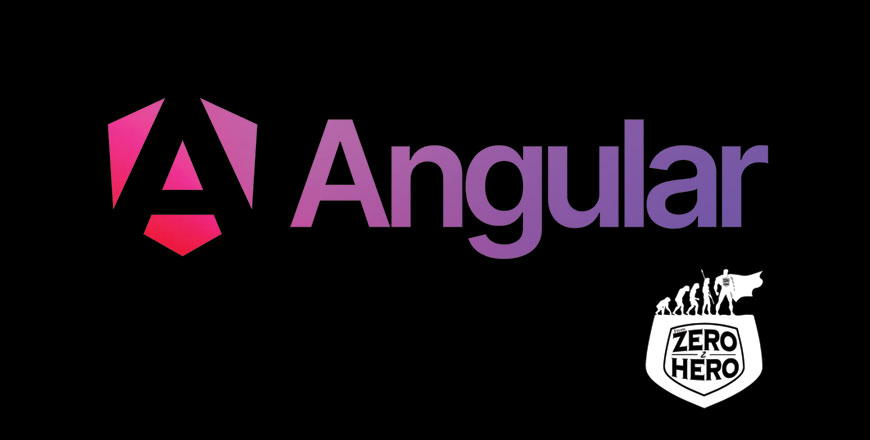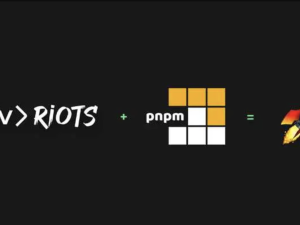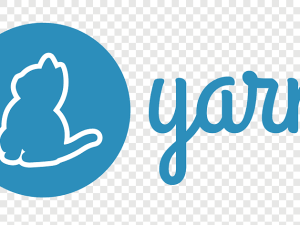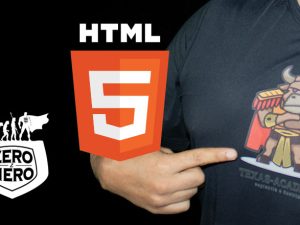Angular from Zero to Hero
- Description
- Curriculum
- FAQ
- Notice
- Reviews
Welcome to “Angular from Zero to Hero,” a comprehensive course designed to transform your web development skills using Angular, one of the most powerful and versatile front-end frameworks. Whether you’re starting with no experience or looking to deepen your understanding, this course covers all the essential aspects of Angular, from its fundamental concepts to advanced features. You’ll learn how to build dynamic, responsive, and efficient web applications, leveraging the full potential of Angular and TypeScript.
-
1Overview of Angular and its evolution (AngularJS to Angular).1h 45m
This chapter introduces Angular, a popular front-end web framework developed by Google. It covers the history of Angular, its core features, and the benefits of using it for building dynamic web applications
-
2Key features and advantages of Angular1h 45mThis lesson is locked because you haven't completed the previous one yet. Finish the previous lesson to unlock this one.
Since Angular is built using TypeScript, this chapter provides a foundational understanding of TypeScript. It covers the basics, including types, interfaces, classes, and modules.
-
3Setting up the development environment with Angular CLI2 hoursThis lesson is locked because you haven't completed the previous one yet. Finish the previous lesson to unlock this one.
-
4Introduction to TypeScript and its role in Angular2 hoursThis lesson is locked because you haven't completed the previous one yet. Finish the previous lesson to unlock this one.
-
5Basic types, interfaces, and classesText lessonThis lesson is locked because you haven't completed the previous one yet. Finish the previous lesson to unlock this one.
-
6Modules and decorators in TypeScriptText lessonThis lesson is locked because you haven't completed the previous one yet. Finish the previous lesson to unlock this one.
-
7Understanding Angular’s architecture (Modules, Components, Services)2hThis lesson is locked because you haven't completed the previous one yet. Finish the previous lesson to unlock this one.
This chapter explores the core architecture of Angular, focusing on the component-based structure. It explains how components are the building blocks of Angular applications.
-
8Creating and using components2hThis lesson is locked because you haven't completed the previous one yet. Finish the previous lesson to unlock this one.
This chapter explores the core architecture of Angular, focusing on the component-based structure. It explains how components are the building blocks of Angular applications.
-
9Component lifecycle hooks and data binding2hThis lesson is locked because you haven't completed the previous one yet. Finish the previous lesson to unlock this one.
This chapter explores the core architecture of Angular, focusing on the component-based structure. It explains how components are the building blocks of Angular applications.
-
10Built-in directives (structural and attribute)2hThis lesson is locked because you haven't completed the previous one yet. Finish the previous lesson to unlock this one.
This chapter covers directives and pipes, two powerful features in Angular. Directives are used to manipulate the DOM, while pipes transform data displayed in the view.
-
11Creating custom directivesText lessonThis lesson is locked because you haven't completed the previous one yet. Finish the previous lesson to unlock this one.
-
12Using and creating pipes for data transformationText lessonThis lesson is locked because you haven't completed the previous one yet. Finish the previous lesson to unlock this one.
-
13Understanding template-driven vs. reactive forms2hThis lesson is locked because you haven't completed the previous one yet. Finish the previous lesson to unlock this one.
This chapter focuses on managing user input through forms. It covers template-driven and reactive forms, form validation, and handling user input.
-
14Form controls, groups, and arraysText lessonThis lesson is locked because you haven't completed the previous one yet. Finish the previous lesson to unlock this one.
-
15Implementing form validation and custom validatorsText lessonThis lesson is locked because you haven't completed the previous one yet. Finish the previous lesson to unlock this one.
-
16Introduction to services and DI2hThis lesson is locked because you haven't completed the previous one yet. Finish the previous lesson to unlock this one.
This chapter explains services in Angular and the concept of dependency injection (DI). It demonstrates how to create reusable services and inject dependencies
-
17Creating and using servicesText lessonThis lesson is locked because you haven't completed the previous one yet. Finish the previous lesson to unlock this one.
-
18Hierarchical injectors and providing servicesText lessonThis lesson is locked because you haven't completed the previous one yet. Finish the previous lesson to unlock this one.
-
19Setting up routes and configuring the router2hThis lesson is locked because you haven't completed the previous one yet. Finish the previous lesson to unlock this one.
This chapter covers the Angular Router, a powerful tool for managing navigation and URL paths in an application. It includes route configuration, navigation techniques, and lazy loading.
-
20Navigation techniques and router linksText lessonThis lesson is locked because you haven't completed the previous one yet. Finish the previous lesson to unlock this one.
-
21Lazy loading modules for performance optimizationText lessonThis lesson is locked because you haven't completed the previous one yet. Finish the previous lesson to unlock this one.
-
22Making GET, POST, PUT, DELETE requests2hThis lesson is locked because you haven't completed the previous one yet. Finish the previous lesson to unlock this one.
This chapter focuses on using Angular's HTTP client to communicate with back-end services. It includes making HTTP requests, handling responses, and error handling
-
23Handling HTTP responses and errorsText lessonThis lesson is locked because you haven't completed the previous one yet. Finish the previous lesson to unlock this one.
-
24Using Observables with HTTP client for reactive programmingText lessonThis lesson is locked because you haven't completed the previous one yet. Finish the previous lesson to unlock this one.
-
25Introduction to state management and NgRx2hThis lesson is locked because you haven't completed the previous one yet. Finish the previous lesson to unlock this one.
This chapter introduces state management in Angular applications using NgRx, a library for reactive state management. It covers concepts like actions, reducers, and effects.
-
26Setting up a store and defining actions and reducersText lessonThis lesson is locked because you haven't completed the previous one yet. Finish the previous lesson to unlock this one.
-
27Using effects for handling side effectsText lessonThis lesson is locked because you haven't completed the previous one yet. Finish the previous lesson to unlock this one.
-
28Performance optimization techniques2hThis lesson is locked because you haven't completed the previous one yet. Finish the previous lesson to unlock this one.
This chapter covers advanced Angular topics, including performance optimization, Angular Universal (server-side rendering), and testing. It also includes best practices for developing scalable applications
-
29Introduction to Angular Universal for SSRText lessonThis lesson is locked because you haven't completed the previous one yet. Finish the previous lesson to unlock this one.
-
30Testing Angular applications (unit tests, end-to-end tests)Text lessonThis lesson is locked because you haven't completed the previous one yet. Finish the previous lesson to unlock this one.
-
31Building and bundling the application2hThis lesson is locked because you haven't completed the previous one yet. Finish the previous lesson to unlock this one.
This chapter provides practical guidance on building and deploying Angular applications. It includes build configuration, deployment strategies, and maintaining applications.
-
32Deployment strategies (hosting options, CI/CD pipelines)Text lessonThis lesson is locked because you haven't completed the previous one yet. Finish the previous lesson to unlock this one.
-
33Maintaining and updating Angular applicationsText lessonThis lesson is locked because you haven't completed the previous one yet. Finish the previous lesson to unlock this one.
-
34Planning and developing a real-world Angular project2hThis lesson is locked because you haven't completed the previous one yet. Finish the previous lesson to unlock this one.
The final chapter focuses on applying the skills learned throughout the course in a real-world project. It also includes case studies of successful Angular applications
-
35Case studies of industry applicationsText lessonThis lesson is locked because you haven't completed the previous one yet. Finish the previous lesson to unlock this one.
-
36Best practices and lessons learned from real-world implementationsText lessonThis lesson is locked because you haven't completed the previous one yet. Finish the previous lesson to unlock this one.
Productivity Hacks to Get More Done in 2018
— 28 February 2017
- Facebook News Feed Eradicator (free chrome extension) Stay focused by removing your Facebook newsfeed and replacing it with an inspirational quote. Disable the tool anytime you want to see what friends are up to!
- Hide My Inbox (free chrome extension for Gmail) Stay focused by hiding your inbox. Click "show your inbox" at a scheduled time and batch processs everything one go.
- Habitica (free mobile + web app) Gamify your to do list. Treat your life like a game and earn gold goins for getting stuff done!

Javascript,
Html,
CSS
This course is perfect for developers aiming to master Angular and build professional-grade applications. Join us and take your front-end development skills to the next level!
Archive
Working hours
| Monday | 9:30 am - 6.00 pm |
| Tuesday | 9:30 am - 6.00 pm |
| Wednesday | 9:30 am - 6.00 pm |
| Thursday | 9:30 am - 6.00 pm |
| Friday | 9:30 am - 5.00 pm |
| Saturday | Closed |
| Sunday | Closed |









